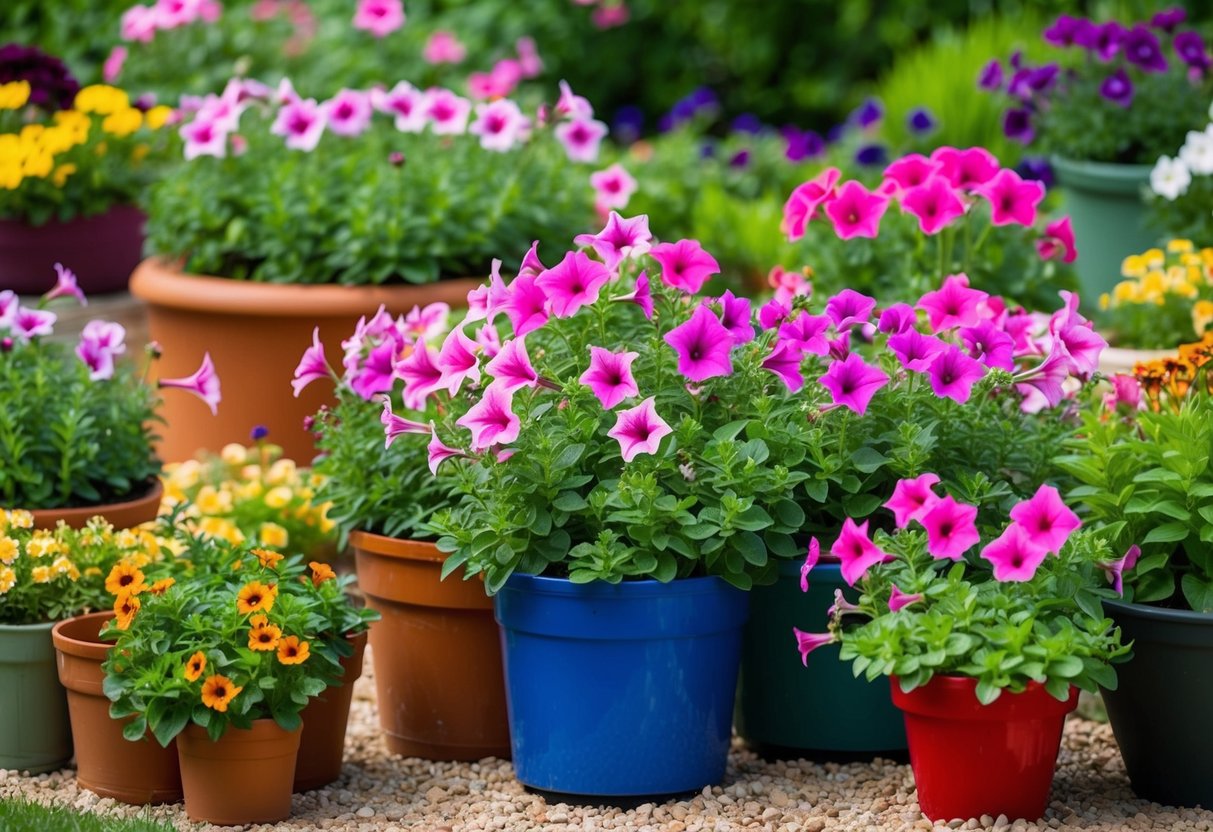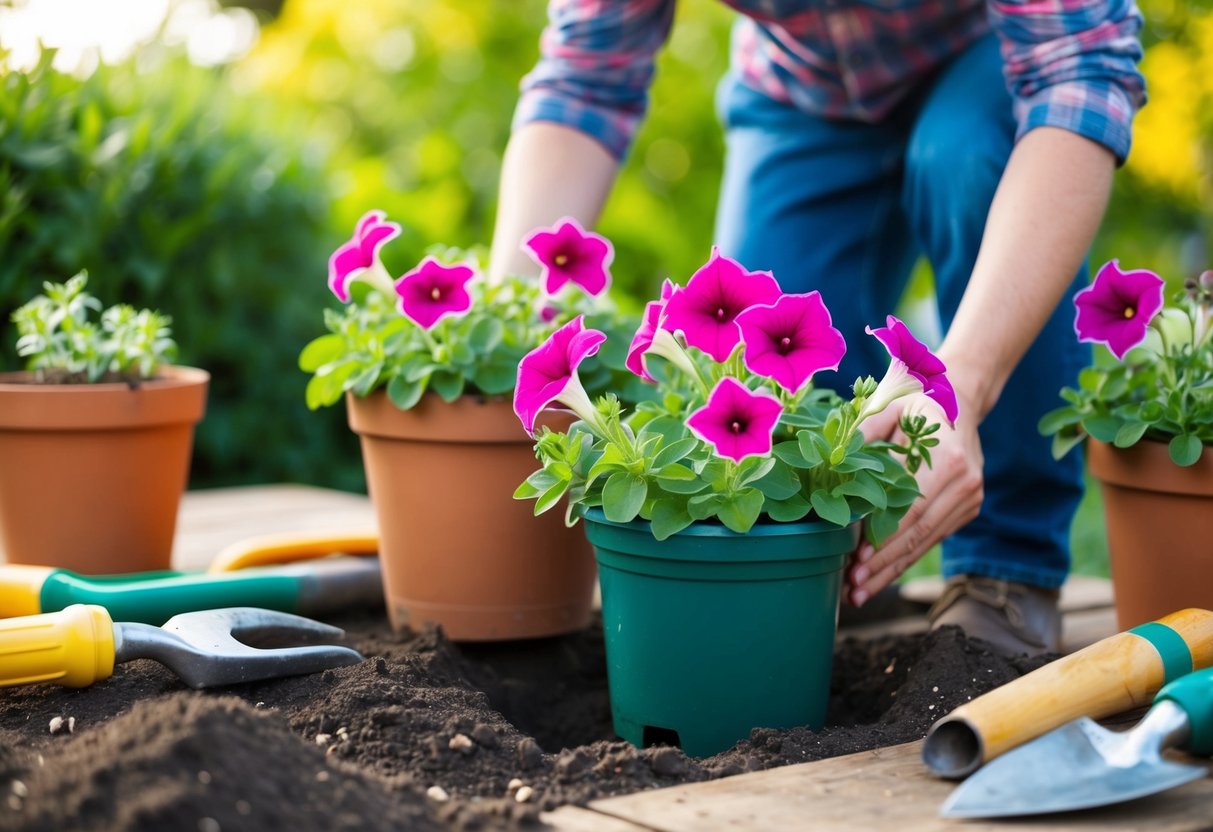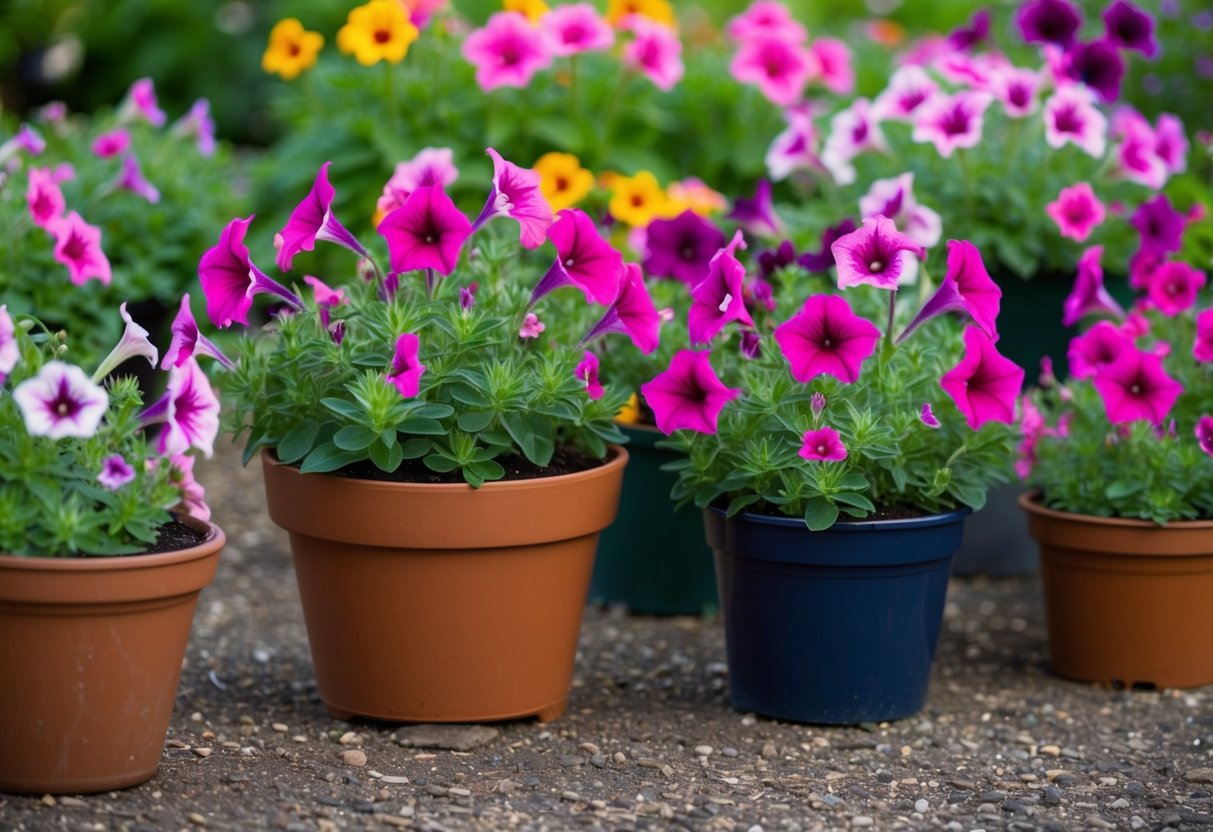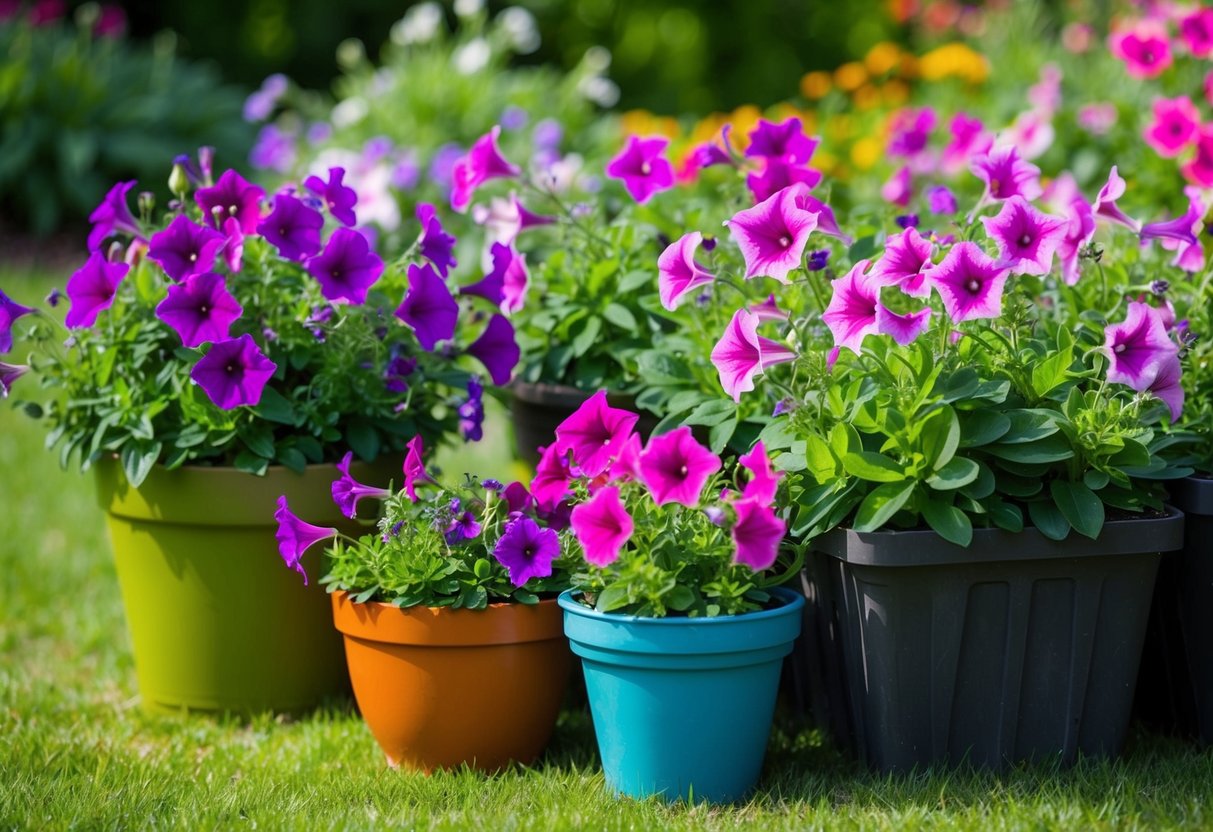Do Petunias Do Better in Pots or in the Ground? Tips for Thriving Blooms
Choosing between growing petunias in pots or in the ground can be a bit of a puzzle. Each option has its perks, and what works best often depends on your specific needs and environment.
Petunias thrive in both pots and the ground, but they may flourish more vibrantly in pots if you have limited space or want greater control over their growing conditions.

In pots, you have the flexibility to move them to catch optimal sunlight and protect them from unwanted weather conditions. This makes them ideal for patios or balconies where space might be tight. Plus, pots can help with drainage, essential for petunias to prevent water-logging.
On the other hand, planting petunias in the ground can be beneficial if you have a large garden space with fertile soil. Ground planting allows their roots to spread more, supporting robust growth. It also provides a natural setup for collecting rain, saving you from frequent watering.
Understanding Petunias

Petunias are popular flowers known for their vibrant colors and easy care. They can thrive in both pots and the ground, offering versatility in your garden. Here, you’ll learn about different types of petunias and their growth habits.
Types of Petunias
Petunias come in various types, each with unique characteristics.
Grandiflora petunias have large, showy blooms that are perfect for hanging baskets and pots. Multiflora types feature smaller but more numerous flowers, making them ideal for garden beds. The compact Milliflora petunias are great for small pots or window boxes and require less maintenance.
There are also specialized petunias like Supertunia and Floribunda.
Supertunias are vigorous growers known for their spreading nature, often used in containers for a cascading effect. Floribunda combines features of Grandiflora and Multiflora, providing a striking display. Each type has specific care needs, so choose the one that best suits your gardening style.
Growth Habits and Features
Petunias are annuals, meaning they complete their life cycle in one season. They love sunlight, requiring at least 5-6 hours of direct sun daily for best growth.
Their flowers come in many colors, like pink, purple, and white. Petunias also enjoy well-draining soil and regular watering.
Trailing petunias are particularly popular for their ability to spread and cover large areas, making them great for ground cover or hanging baskets. Their growth habits make them versatile for many settings, whether you’re planting in pots or directly in the ground. Understanding these features will help you get the most from your petunia plants.
Planting Petunias

Planting petunias can bring vibrant colors to your garden or container arrangements. Ensuring the right environment and using suitable soil and techniques will make your petunias flourish.
Choosing the Right Environment
Decide whether you want to plant petunias in the ground or in containers.
In the ground, petunias can spread and cover garden beds, creating a colorful landscape. Make sure to choose a sunny location, as petunias need plenty of sunlight to thrive.
Containers are ideal for patios or balconies. They allow you to move your petunias to ensure they get enough light. Plus, containers help control soil conditions better. If you prefer the flexibility of moving your flowers around, go for containers.
Soil and Planting Techniques
Petunias thrive in well-drained soil. You should use a mix of garden soil and organic matter like compost to enrich the soil. Adding peat moss can improve drainage and keep the soil loose. For containers, a potting mix that drains well is crucial.
When planting seeds, ensure they get light to germinate. Sow seeds on top of the soil, lightly cover them, and water gently.
Once your seedlings have three leaves, plant them outside. Space them about 12-18 inches apart in the ground or in containers. Keep the soil consistently moist but not waterlogged.
Caring for Petunias

Petunias are beautiful, vibrant plants that require regular attention. You’ll need to focus on watering, fertilizing, and pruning to keep them thriving. These steps help maintain their blooms and overall health.
Watering Essentials
Petunias thrive best when their soil is kept consistently moist. In containers, soil may dry out quickly, so check it frequently.
Allow the soil to dry a bit between waterings but avoid letting it become bone dry.
In hot weather, these plants might need daily watering. For the best results, water them in the morning. This helps reduce the risk of fungal diseases.
Use a watering can or hose with a fine spray to gently soak the soil without damaging the flowers.
Fertilization and Nutrients
Petunias are considered heavy feeders, meaning they thrive with plenty of nutrients.
Use a balanced liquid fertilizer every two weeks for continuous blooms. A slow-release fertilizer is also a good choice, particularly when planting in pots.
To further enrich the soil, consider adding well-rotted manure or compost. If you’re using potting mix, choose one with built-in fertilizer. This will ensure your petunias get off to a strong start and maintain their vigor all season long.
Pruning and Deadheading
Regular pruning and deadheading keep petunias looking neat and encourage more blooms.
When you notice faded or dead flowers, pinch them off just above the next leaf node. This helps direct the plant’s energy into producing new flowers.
Occasionally, petunias might become leggy as they grow. You can trim back about one-third of the plant to promote bushier growth. Use clean, sharp scissors to avoid damaging the plant. By staying on top of pruning and deadheading, your petunias will remain lush and full.
Containers vs. Ground

When deciding whether to grow petunias in containers or in the ground, there are several factors to consider. Each option has its own set of benefits that can influence how your petunias thrive and their overall appearance.
Benefits of Pot Culture
Petunias in containers offer great flexibility. You can move the pots around to catch more sunlight or find shelter from harsh weather. Containers such as window boxes or hanging baskets can turn any small space into a colorful garden.
With pots, you can ensure the soil is always well-draining, reducing the risk of root rot. Adding materials like coconut coir or perlite to your potting soil can improve drainage. Make sure each pot has a drainage hole to prevent water accumulation.
By using moisture-retentive materials in your mix, you can maintain soil moisture, which is crucial for healthy growth. Plus, container gardening lets you experiment with different varieties by planting multiple types of petunias together.
Ground Planting Advantages
Planting petunias in the ground can offer them more space to grow. This provides better air circulation between the plants, reducing disease risk.
In-ground planting lets petunias access a larger nutrient supply, enhancing their growth potential. For successful planting, choose a spot with at least 6-8 hours of sunlight.
It’s important to use fertile, well-draining soil with a slight acidity. This helps ensure healthy root development and blooms.
By spacing plants 12-18 inches apart, you allow enough room for each plant to flourish. If you prefer a more permanent or low-maintenance setup, in-ground planting might be the best choice for your garden.
Pest and Disease Management

Taking care of petunias involves managing pests and diseases to ensure healthy growth. Understanding common pests and learning how to treat and prevent issues can keep your plants thriving whether in pots or in the ground.
Common Challenges
Petunias can attract several pests. Aphids are small insects that suck sap, weakening your plants. They often cluster on new growth or blooms.
Slugs are another concern, especially when it’s wet. They chew on leaves, leaving unsightly holes.
Petunias are also prone to diseases like powdery mildew, a white, powdery fungus that covers leaves. High humidity and rain damage can increase these issues. Overwatering or poor drainage makes it worse, especially in potted plants.
Prevention and Treatment
To protect petunias, you need to inspect them regularly. Check for signs of damage like yellowing leaves or slowed growth. Introducing beneficial insects like ladybugs can naturally control aphid populations. Setting up barriers or traps can help manage slugs.
For disease prevention, ensure your petunias have good air circulation. Avoid overhead watering to reduce humidity. In case of powdery mildew, consider using a mild fungicidal spray. Keep the soil well-drained and remove any diseased plant parts promptly. When growing in pots, choose containers with proper drainage to avoid standing water. Regular maintenance can keep your petunias beautiful all season long.







